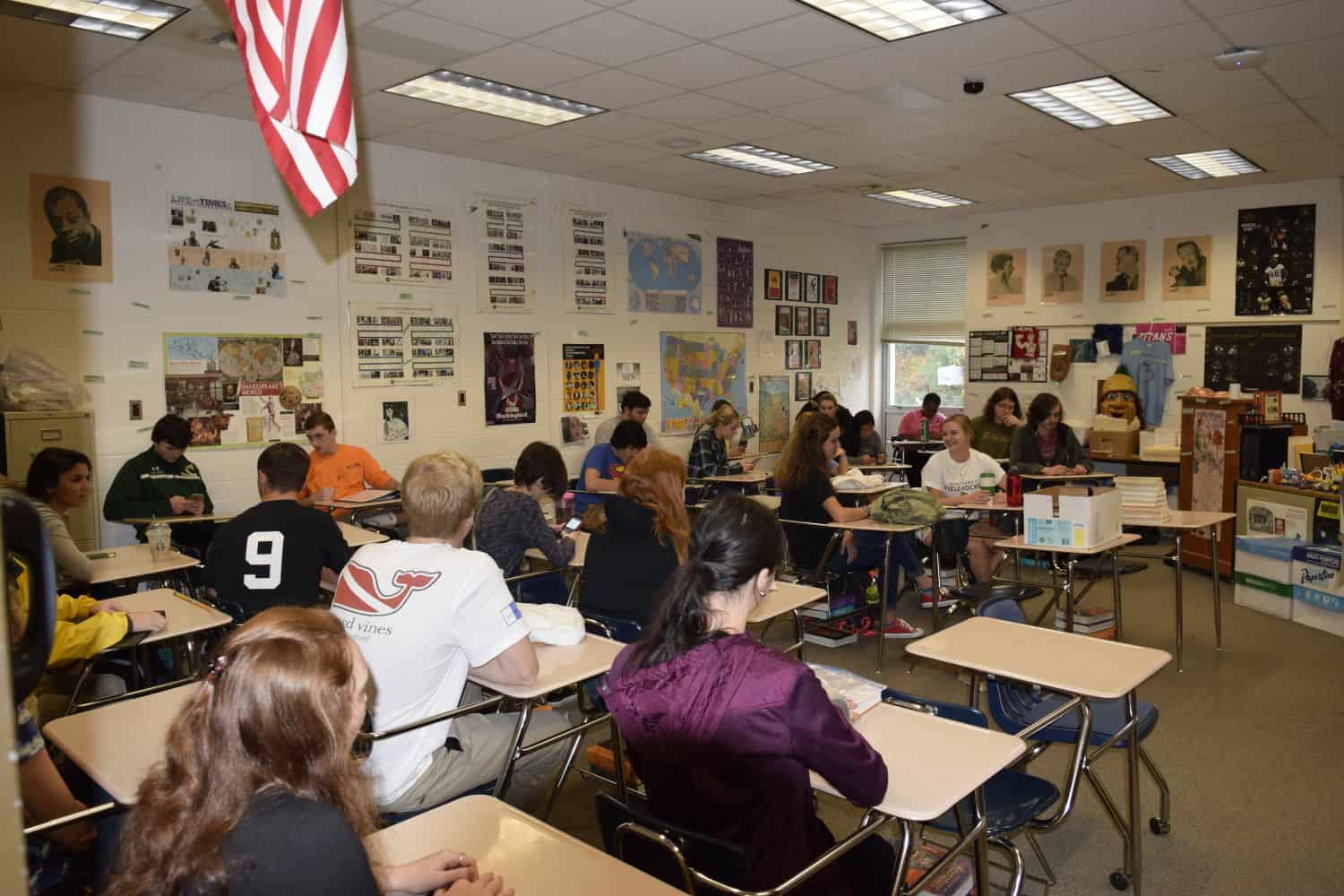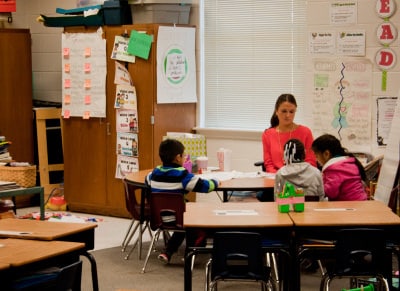For a number of years, the North Carolina General Assembly’s leadership has been reducing funding to school districts for teacher assistants. Their rationale is that the research shows little or no impact on student achievement of having a teacher assistant in the classroom with the licensed teacher. There are a number of problems with this rationale, including:
- The research they relied on is old and limited – so old that it was before No Child Left Behind required increased education and/or qualifications for instructional classroom assistants
- Having a teacher assistant in a classroom of 5-year-old kindergarten students has little to do with student achievement measured by test scores and everything to do with one pair of hands not being sufficient to meet the non-instructional but essential functional growth needs of those young children
- In many North Carolina counties, using teacher assistants as part-time bus drivers is the only way they can safely get all children to and from school 180 days per year
- Teacher assistants in most elementary schools provide teachers valuable planning time by handling car and bus unloading/loading duties before and after instructional hours and/or by supervising students at recess and other short periods of time during the day – if any of you have ever taught elementary school or substituted for an elementary teacher, you understand how action-packed that teacher’s day is, moving seamlessly through as many as five or more completely different lessons during the 6+ hour instructional day – just going to the bathroom can be a challenge without someone to provide student supervision during that time
This rationale also ignores nearly every other piece of educational research that holds out promise for efficiently providing significantly better student learning results. Nearly every study in the past 30 years has indicated that reducing class size to 15 students or less does significantly improve student learning results, but that adding teachers to reduce class sizes to averages of higher than 15 students has little positive impact. And yet class size reduction is what every General Assembly, including the current leadership, has been doing in North Carolina since the mid-1980s, and they have yet to get any grade level below an average of 17 students per teacher, and most grade levels average 20 or more students per classroom. Many high school classrooms are still at or above 30 students each.
Every new teacher costs far more than his/her salary and benefits. Each new classroom costs between $150,000 and $450,000 to acquire or build (all local funds or lottery proceeds), depending on whether it is a stand-alone mobile classroom or part of a new school. Eventually, adding even the least expensive mobile classrooms requires other capital expenditures to add other facilities, such as restrooms, more cafeteria space, more media center space, etc. Besides the capital costs, every new classroom requires furniture and furnishings, instructional technology and equipment, basic supplies and materials, cleaning and routine maintenance, and utilities to light, heat, and cool.
The net result is that in North Carolina we have been eliminating people that cost $30,000 each in salary and benefits and adding people that cost $50,000 each in salary and benefits, plus require hundreds of thousands of dollars of up-front costs plus thousands of dollars of other annual costs. And we are doing this while the research (and our own results) tells us that we will accomplish little or nothing in enhancing student learning.
It might seem reasonable that teaching a class of 17 students should be easier than teaching a class of 20 students. But there are other factors at play. The supply of quality teachers is limited, and becoming more so, but we have to put the best person we can find in that new classroom. When that person realizes teaching is not for him/her, we find the next-best person to put in that classroom. Teaching in North Carolina has become a revolving door with too many classrooms staffed by teachers who quickly realize that they are in the wrong profession, but not because of lack of effort on their part. Fewer classrooms not only save money, they give us a better opportunity to have more students taught by a qualified and quality instructor. Those quality instructors just need more support in terms of empowering leadership, better pay, technology, other tools, planning time, training, and relief from “administrivia.” In terms of that list of supports, the General Assembly is providing little or no funding for any of them and enacting provisions every year that make it more difficult to teach.
So, to the following questions, I propose the following answers:
- Do we need teacher assistants in every kindergarten classroom? Absolutely!
- Do we need teacher assistants in every grades 1-3 classroom? Probably not, but we do need some number of additional teacher assistants in every elementary school to provide planning time and other support for those teachers, plus to drive buses in many counties. My assessment is that we need at least as many teacher assistants as the current level of funding provides, and probably a few more per school.
- Do we need additional teachers to reduce class sizes? Not unless we can get the average class size down to the 15 students that research suggests is valuable, and I don’t think we will ever be able to afford to do so, and I don’t think the quality teachers will be available to be hired.
- Should the General Assembly fund fewer teacher positions and more technology and teacher training? While many educators want to argue that the General Assembly can/should fund both more teachers and more dollars for technology and teacher training, I make the counter-intuitive argument that fewer teachers not only frees up dollars that could be used for teacher support but likely also makes it easier to provide a quality education for all students in our current teacher shortage environment. However, the funding for teacher support has to come before, or at least simultaneous with, any reduction in numbers of teacher positions. The General Assembly currently provides no funding for teacher training or teacher planning time, a pittance for technology, and a teacher pay plan that has haphazardly rewarded some quality teachers, but not nearly all, with no differentiation based on quality and not nearly enough differentiation based on experience (e.g., a fifth-year teacher earns the same as a first-year teacher).
Let’s encourage our legislators to invest our money more wisely to better educate our children!




